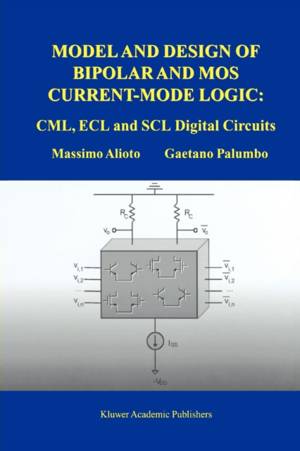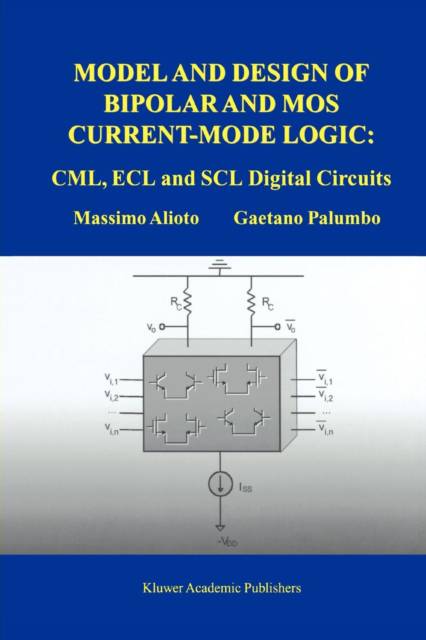
- Afhalen na 1 uur in een winkel met voorraad
- Gratis thuislevering in België vanaf € 30
- Ruim aanbod met 7 miljoen producten
- Afhalen na 1 uur in een winkel met voorraad
- Gratis thuislevering in België vanaf € 30
- Ruim aanbod met 7 miljoen producten
Zoeken
Model and Design of Bipolar and MOS Current-Mode Logic
CML, ECL and SCL Digital Circuits
Massimo Alioto, Gaetano Palumbo
Paperback | Engels
€ 181,95
+ 363 punten
Uitvoering
Omschrijving
Current-Mode digital circuits have been extensively analyzed and used since the early days of digital ICs. In particular, bipolar Current-Mode digital circuits emerged as an approach to realize digital circuits with the highest speed. Together with its speed performance, CMOS Current-Mode logic has been rediscovered to allow logic gates implementations which, in contrast to classical VLSI CMOS digital circuits, have the feature of low noise level generation. Thus, CMOS Current-Mode gates can be efficiently used inside analog and mixed-signal ICs, which require a low noise silicon environment. For these reasons, until today, many works and results have been published which reinforce the importance of Current-Mode digital circuits. In the topic of Current-Mode digital circuits, the authors spent a lot of effort in the last six years, and their original results highly enhanced both the modeling and the related design methodologies. Since the fundamental Current-Mode logic building block is the classical differential amplifier, the winning idea, that represents the starting point of the authors' research, was to change the classical point of view typically followed in the investigation and design of Current-Mode digital circuits. In particular, they properly exploited classical paradigms developed and used in the analog circuit domain (a topic in which one of the authors maturated a great experience).
Specificaties
Betrokkenen
- Auteur(s):
- Uitgeverij:
Inhoud
- Aantal bladzijden:
- 318
- Taal:
- Engels
Eigenschappen
- Productcode (EAN):
- 9781441952585
- Verschijningsdatum:
- 29/10/2010
- Uitvoering:
- Paperback
- Formaat:
- Trade paperback (VS)
- Afmetingen:
- 155 mm x 236 mm
- Gewicht:
- 498 g

Alleen bij Standaard Boekhandel
+ 363 punten op je klantenkaart van Standaard Boekhandel
Beoordelingen
We publiceren alleen reviews die voldoen aan de voorwaarden voor reviews. Bekijk onze voorwaarden voor reviews.











